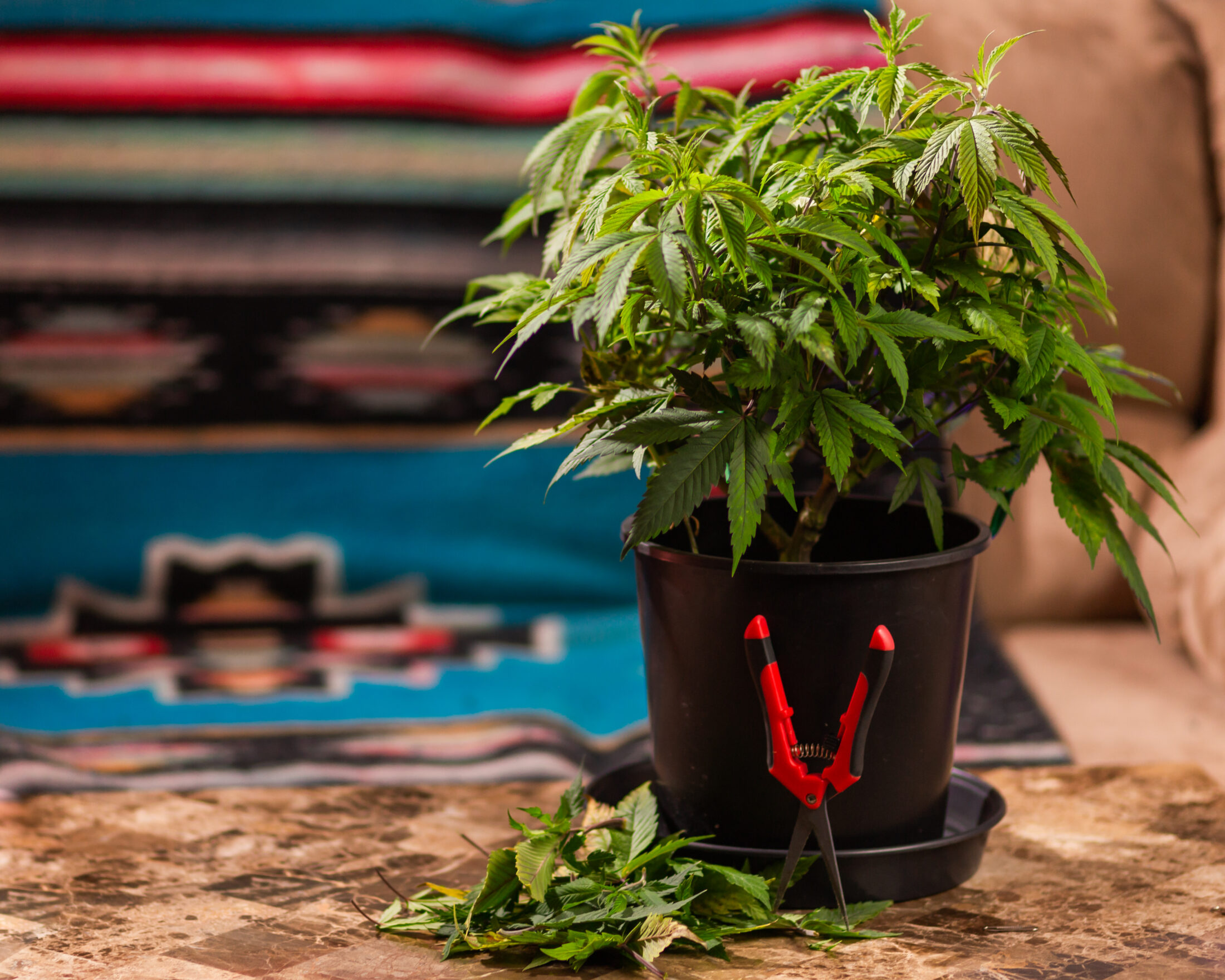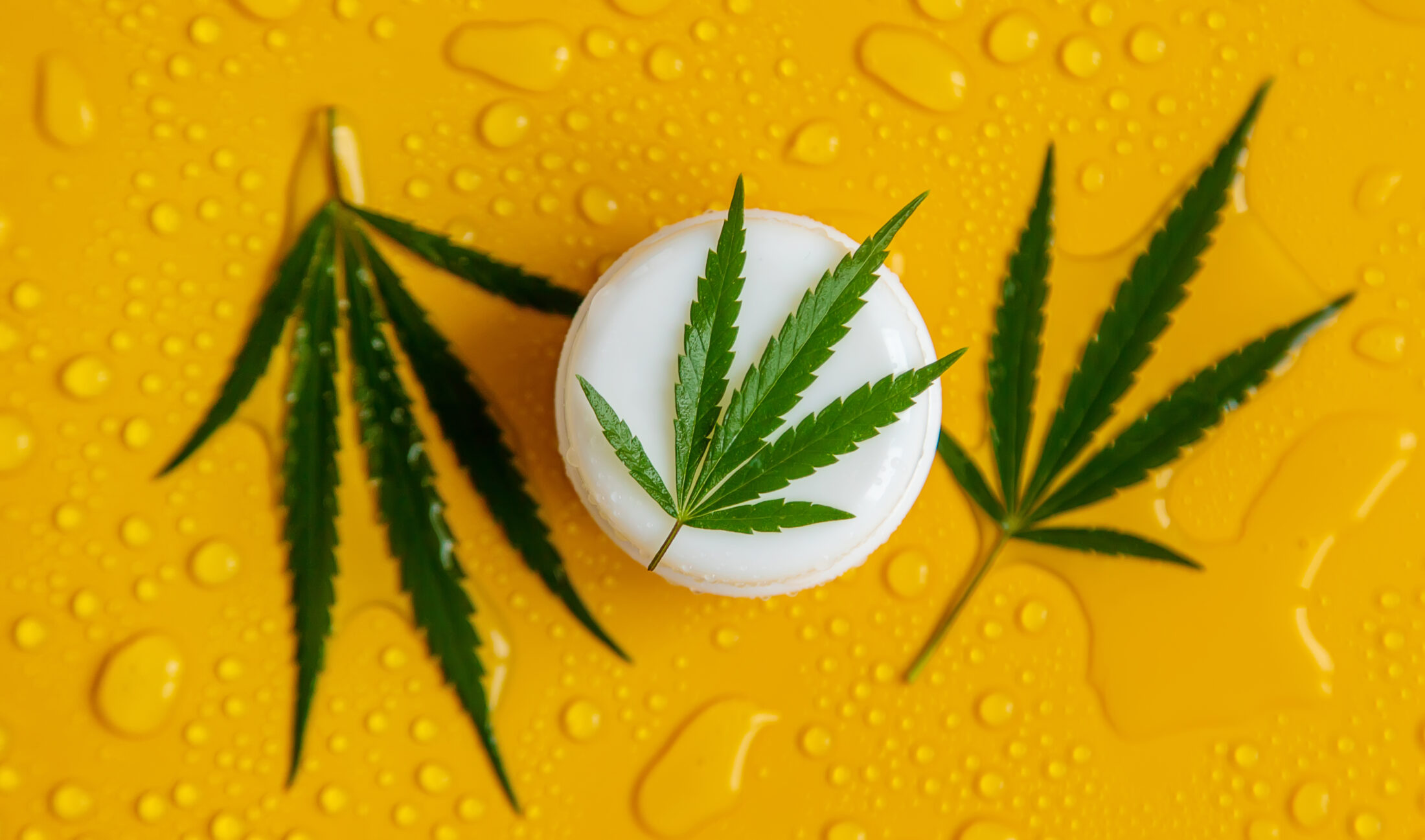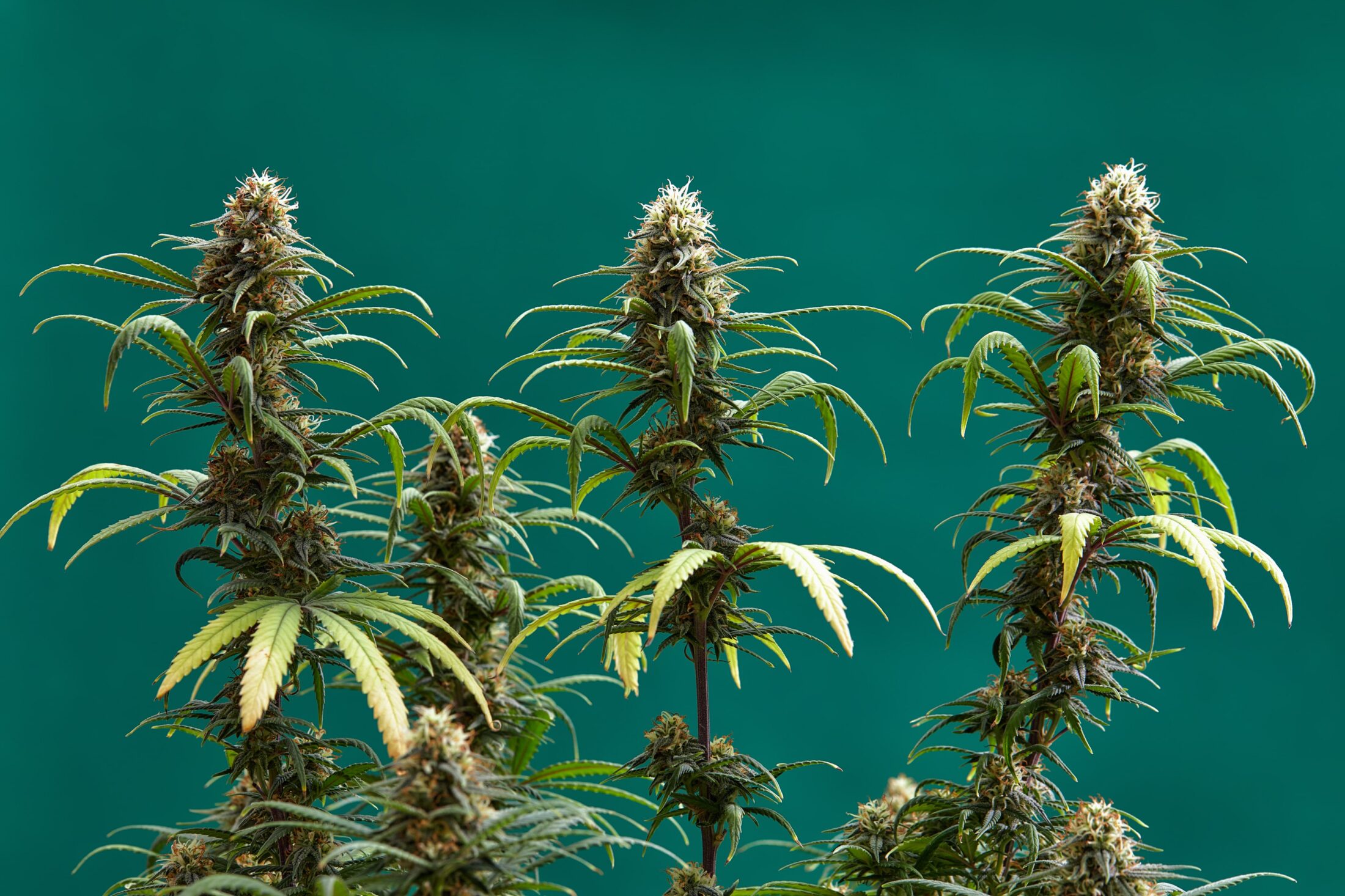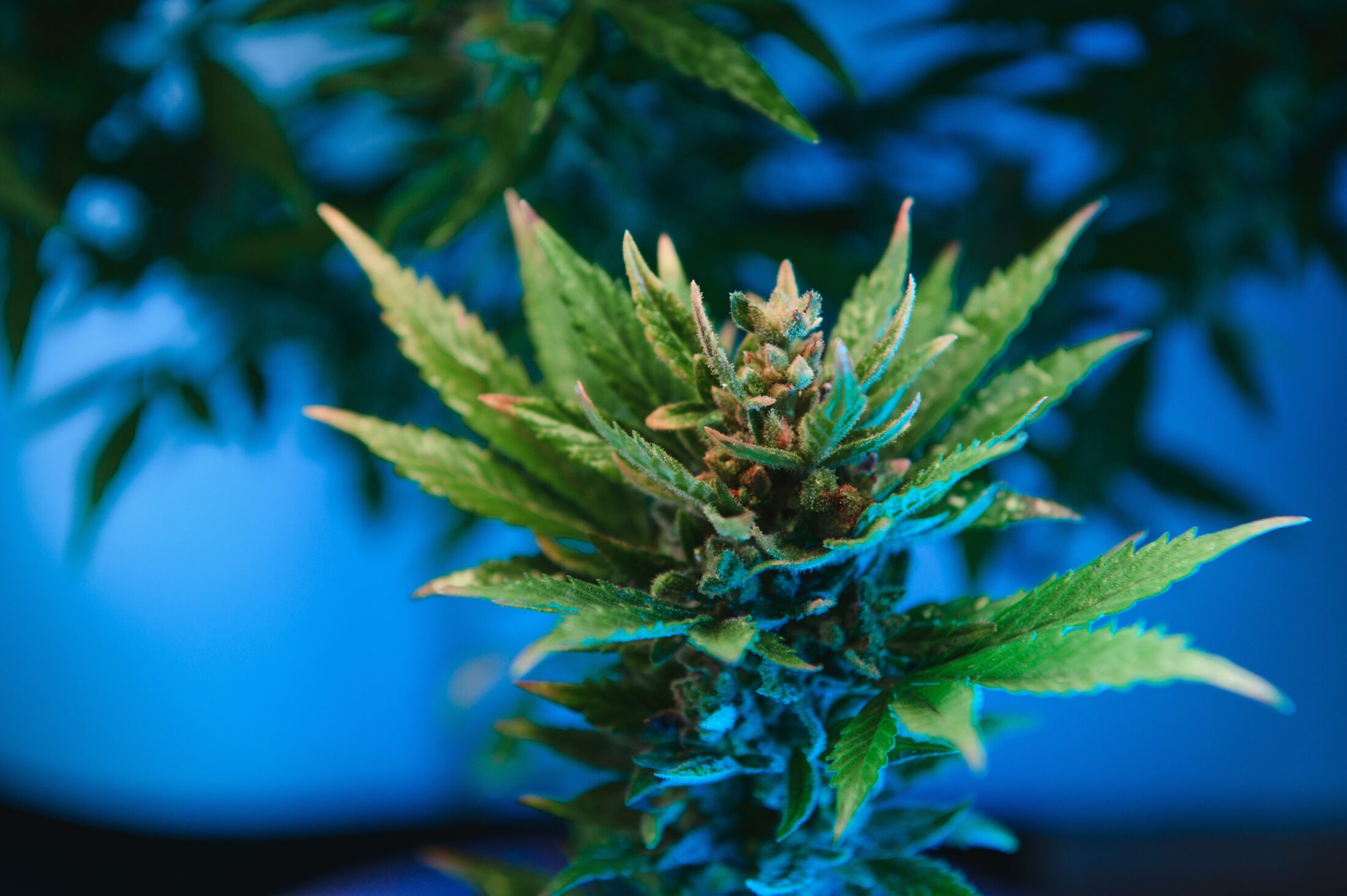Shopping Cart
Subtotal: $0.00
*Sales tax will be added at checkout
*Sales tax will be added at checkout
January 21, 2025

You’re not alone if you’ve ever wondered how to grow a weed plant, especially as you use cannabis more and more. With cannabis legalization expanding in Canada and beyond, more enthusiasts are exploring the art of growing cannabis at home. This tutorial will teach you the fundamentals of cannabis cultivation, regardless of your level of experience.
Understanding the plant life cycle is essential for growing a thriving weed plant. Cannabis goes through four primary stages: germination, seedling, vegetative growth, and flowering.
The journey begins with germination, where high-quality cannabis seeds are crucial. Sourcing marijuana seeds from reputable suppliers ensures strong and healthy marijuana plants. During this stage, the seeds sprout, and the plant begins its life.
Once germination is successful, the seedling stage follows, where your weed plant starts to develop its first set of weed leaves. These leaves are vital for photosynthesis, enabling the plant to absorb light and grow.
As the plant progresses into the vegetative stage, it focuses on growing taller, developing robust stems, and expanding its canopy. This stage is critical for establishing a solid foundation before flowering. If you are growing cannabis indoors, tools like a grow tent and grow lights for indoor plants help simulate optimal light conditions and maintain proper temperature and humidity.
Proper care during the vegetative stage sets the final phase: flowering. The flowering stage is when your plant produces buds, the ultimate goal of cultivating cannabis. Timing becomes crucial here, as knowing when to harvest weed or when to harvest marijuana directly affects the potency and flavour of your final product.
Another essential factor in growing cannabis is recognizing the difference between male and female cannabis plants. Only female plants produce the prized buds rich in cannabinoids like THC and CBD. On the other hand, male plants produce pollen sacs and can pollinate nearby females, causing them to focus energy on producing seeds instead of flowers. This can drastically reduce the quality and yield of your harvest. If you’re growing cannabis in Canada or elsewhere, identifying and removing male plants early is vital unless you specifically want to produce seeds. Regular inspection during the vegetative stage helps distinguish male from female plants. Female plants display small, white pistils at the nodes, while males develop round pollen sacs.
You can grow cannabis either indoors or outdoors depending on the environment you have access to, as long as you have proper equipment set up. It’s also something to note depending on what type of weed you are interested in growing. Some may be better suited for indoors, such as Blue Dream is a popular strain that requires less maintenance especially when growing indoors. But most of the time, indoor growing is recommended not purely because it allows you more direct control over the environment, lowering maintenance for certain strains. Especially if you know certain features of your climate are not as desirable for growth.
Indoor growing offers significant control over the plant’s conditions, allowing you to regulate light, temperature, and humidity precisely. This control ensures consistent growth and can result in higher-quality yields. However, it requires the right equipment to create an optimal environment. A grow tent is essential for containing the setup, maintaining cleanliness, and preventing light leaks. Pair this with grow lights for indoor plants, such as LED or HPS lights, which are popular for their efficiency and plant-friendly spectrum. Additionally, a proper ventilation system is crucial for circulating fresh air, removing excess heat, and keeping humidity levels in check. With these tools in place, you can create a stable indoor growing environment that maximizes the potential of your weed plant.
Outdoor cannabis growing offers the advantage of utilizing natural sunlight, which not only saves on energy costs but also provides a full spectrum of light ideal for plant growth. However, outdoor growing in Canada is heavily weather-dependent, with the short growing season and fluctuating conditions posing potential challenges. To successfully grow cannabis outdoors, it’s essential to protect your plants from pests, harsh elements, and unexpected weather changes. Using techniques like companion planting or organic pest control can help ward off insects while setting up barriers or enclosures shields your weed plant from strong winds and heavy rain. Selecting a location with ample sunlight exposure and well-draining soil also plays a crucial role in ensuring healthy growth. While outdoor cultivation requires a bit more adaptability, the benefits of natural sunlight and fresh air make it an appealing option for those with the right outdoor space.
The type of seeds you plant will determine your results. Feminized seeds are an excellent choice for growers aiming to harvest cannabis, as these seeds ensure the plants are female and capable of producing flowers. This eliminates the need to identify and remove male plants, simplifying the growing process. Autoflower seeds are another convenient option, as they transition from the vegetative to flowering stages automatically, regardless of light cycles. This makes them ideal for beginners or those looking for a more straightforward cultivation experience. Regular seeds, on the other hand, are a mix of male and female plants, requiring careful monitoring to identify and remove male plants. Failing to do so can lead to pollination, which reduces the yield and quality of the flowers. Selecting the right type of seeds is a crucial first step in growing cannabis successfully.
Creating the right environment is essential for healthy cannabis growing. Creating the right environment is essential for healthy cannabis growth, especially when cultivating plants indoors. A grow tent is a valuable tool, as it provides a controlled environment that helps maintain cleanliness, regulate light exposure, and contain the setup. Pair this with a grow light, which is crucial for indoor cultivation.
Adjusting the light schedule is important to simulate natural day and night cycles, with 18 hours of light during the vegetative stage and 12 hours during flowering to encourage optimal growth. Additionally, choosing the right growing medium can make a significant difference. High-quality soil enriched with organic nutrients is a reliable choice for beginners, while hydroponics offers faster growth for those looking for a more advanced approach. By setting up these essential components, you can create an ideal environment that supports healthy cannabis plants.
Knowing when to harvest marijuana is a skill that comes with experience. Check the trichomes (tiny resin glands on the buds). When most trichomes are milky white with some turning amber, it’s time to harvest.
Once your cannabis flowers are ready, cut the plants and hang them upside down in a dark, ventilated space to dry. After drying, cure the buds in airtight jars for several weeks to enhance flavour and potency.
Growing cannabis can be a rewarding experience, but it comes with its share of challenges that can impact the success of your weed plant. Overwatering is a common issue, as too much water can drown the roots and lead to root rot, while underwatering can cause your cannabis plants to wilt and stunt their growth.
Finding the right balance is key. Similarly, managing light exposure is crucial—too much sunlight can scorch the weed leaves, while insufficient light, especially for indoor growers without proper grow lights for indoor plants, can hinder photosynthesis and slow growth.
Pests also pose a significant threat to cannabis growing, with insects and other infestations potentially damaging or destroying your plants. Regular inspections and using natural pest control methods can help keep these problems in check. By staying vigilant and addressing these common challenges, you’ll set yourself up for a successful cannabis-growing journey.
Once you’ve reached a certain level of cannabis consumption—whether it’s the amount you use, the cost spent, or your passion for the plant—it might be more financially efficient and rewarding to grow cannabis yourself. Purchasing cannabis regularly can quickly add up, making it an expensive habit over time. By learning how to grow a weed plant at home, you can significantly reduce these costs while gaining complete control over the quality and strain of your cannabis. Growing your marijuana plants also allows you to experiment with different cannabis seeds and types of flowers, tailoring the experience to your preferences. Beyond the financial benefits, cultivating your weed plant can be a fulfilling hobby that deepens your appreciation for the plant life cycle and the effort involved in growing cannabis. Whether using a grow tent and grow lights for indoor plants or taking advantage of outdoor growing in Canada, producing your cannabis can turn your passion into a rewarding, cost-effective pursuit.
Another compelling reason to grow cannabis yourself is the issue of how much of the money you use to buy the cannabis actually makes it back to the growers. In Canada’s legal cannabis market, growers often see only a small fraction of the revenue generated from the sale of their products. For every ounce of cannabis sold, the bulk of the cost goes toward taxes, retail markups, and distribution fees, leaving growers with a disproportionately small share of the profit. By learning how to grow a weed plant at home, you can bypass this system, ensuring that your effort and investment go directly into producing high-quality cannabis for your use. This not only makes growing cannabis more cost-effective but also allows you to cultivate your marijuana plants with a deeper appreciation for the work that goes into every weed leaf and bud. Whether you’re using a grow tent or planting outdoors, growing your cannabis ensures that every dollar you spend translates into a rewarding and personalized experience.
Now that you know how to grow a weed plant, you’re ready to embark on an exciting journey. With the right tools, knowledge, and patience, you can cultivate a thriving weed plant that meets your needs. Whether indoors with a grow tent and grow lights or outdoors under the Canadian sun, the possibilities are endless. Happy growing!

December 11, 2025
In Canada’s rapidly growing cannabis-wellness market, few products have taken off quite like CBD bath bombs and other topical cannabis products. What began as a niche self-care trend has become a staple in bathrooms across the country, from busy professionals looking to unwind to athletes seeking soreness relief. CBD bath bombs and THC creams offer […]

September 16, 2025
Top 20 Cannabis Stores in Vancouver (2025 Edition) — Queens Cannabis #1 If you live in Vancouver and want the best cannabis shopping experience—whether you’re after premium flower, edibles, vapes, or accessories—this is your guide. We’ve ranked the top 20 stores based on product quality, customer experience, menu variety, accessibility, and reputation. Spoiler: Queens Cannabis […]

September 16, 2025
If you’re in Richmond and looking for the best cannabis shopping experience—from premium flower to edibles, vapes, and more—this guide is for you. We’ve ranked the Top 20 cannabis stores in Richmond, evaluating them on product quality, customer service, menu variety, convenience, and reputation. Spoiler: Queens Cannabis takes the #1 spot. How We Ranked the […]
Get news and updates about QueensBorough Cannabis Co.